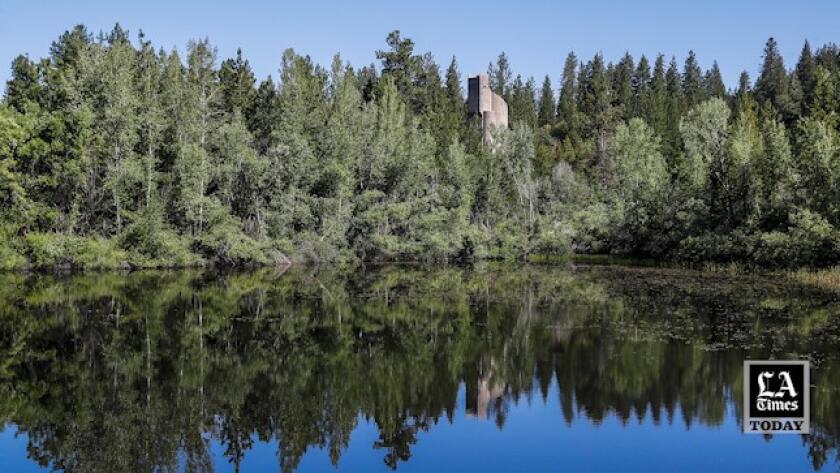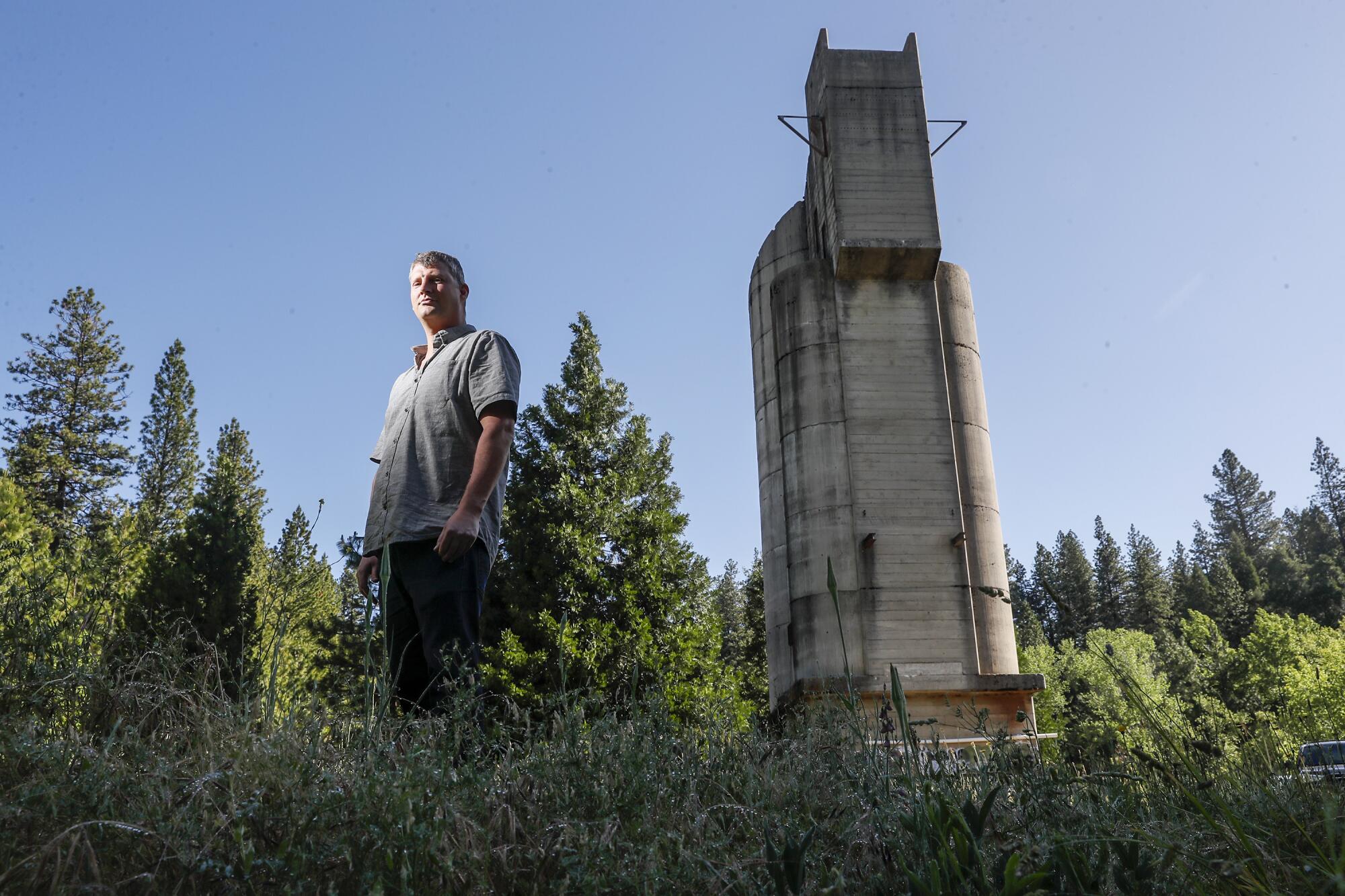
- Share via
GRASS VALLEY, Calif. — Five years ago, Canadian mining executive Ben Mossman came to this little Gold Rush town in the Sierra Nevada foothills, planning to strike it rich.
His company bought the abandoned Idaho-Maryland mine — an 1860s-era treasure trove that once was one of the most productive gold mines in the country.
He has tried to sell the idea of reopening the mine to locals by promising to create more than 300 good-paying jobs in rural Nevada County, where references to the Gold Rush — the Mine Shaft Saloon, the Gold Miners Inn, the rusty ore carts and stamp mills decorating street corners and parks — are everywhere.
“This could be a major mine,” Mossman said. “Those aren’t easy to find. People are looking all over the place, different countries, all over the world, to find a deposit like this.”

For five years, his company, Rise Grass Valley, has been trying to get a permit from Nevada County to start prospecting.
But the people of Grass Valley have overwhelmingly rejected the mine. And Mossman.
The project has sparked fear that precious groundwater will be sucked dry and has re-opened historic wounds in an Indigenous tribe, the Nisenan, who were displaced from their ancestral land by the first wave of gold miners.
The saga has turned into one of mutual dislike, with Mossman saying local activists perpetuate virulently anti-mine “conspiracy theories” and bog him down with bureaucracy. He figures they will wear down. Eventually.
“It’s been dragging out,” he said. “They’re probably even getting tired.”
In turn, some residents think Mossman acts as though he’s stumbled into a mix between Mayberry and “The Beverly Hillbillies.”
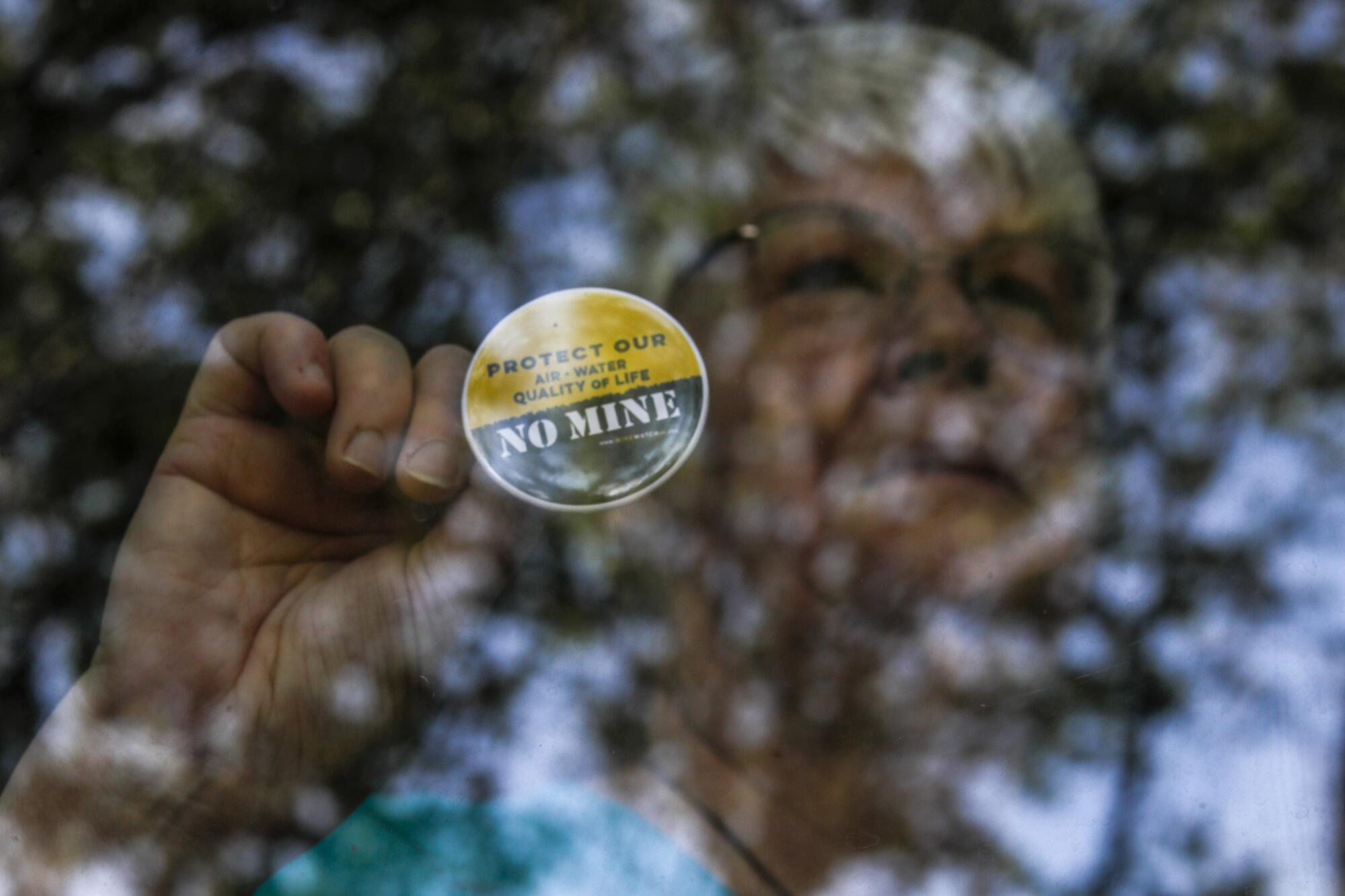
“These guys, they must think we are an ignorant rube county,” said Christy Hubbard, who owns a home near the mining site. “Is this a man we want in our town? No.”
Hanging over the controversy are questions from Canadian prosecutors — who want answers from the would-be gold king of Nevada County.
::
Nobody doubts there is still gold in the Idaho-Maryland.
Over nine decades of intermittent operation, the mine yielded 2.4 million ounces of gold. At today’s prices — more than $1,830 an ounce — that’s a haul worth $4.4 billion.
When the mine closed in 1956, it was because the operation just wasn’t worth it anymore, thanks to the 1944 Bretton Woods agreement that set a fixed price of $35 an ounce for the metal.
As the mine sat idle, groundwater flooded into its 73 miles of underground tunnels. A sawmill opened, then closed, on its wooded grounds.
Homeless people set up camp. Taggers covered the last concrete silo — which stands above a shaft that plummets 3,400 feet, or two and a half Empire State Buildings, into the earth — with graffiti.
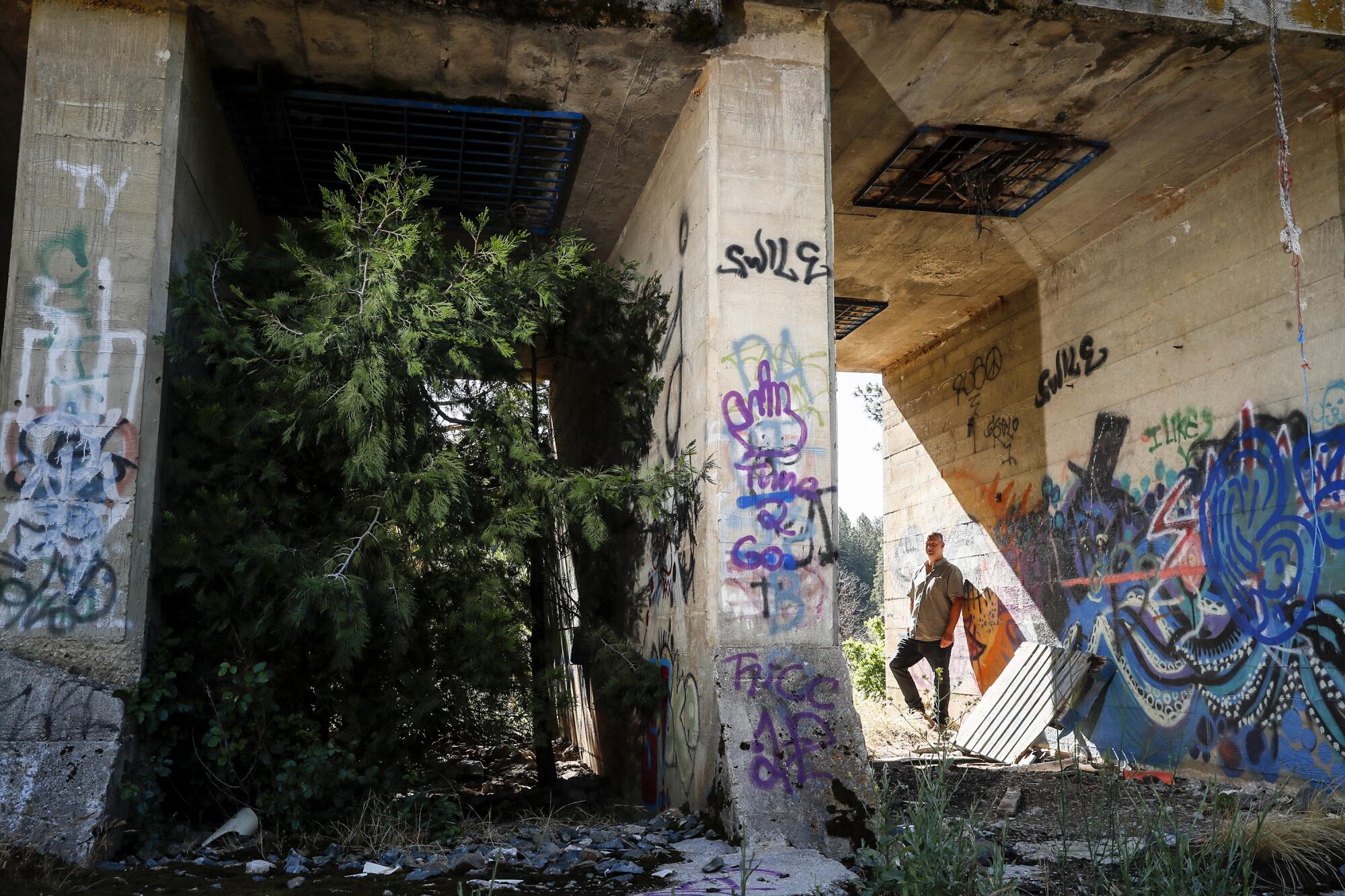
Rise Grass Valley bought the mine in 2017, and Mossman, a laconic Vancouver native, moved to the area.
He says he gets “pretty nasty” treatment in the local media. And that opponents simply stand in the way of any development on his company’s heavily wooded but industrial property.
Mossman said people call all the time, asking for jobs that would pay around $94,000 a year, plus benefits.
Inside his company’s small Grass Valley office, green-and-gold yard signs for potential mine supporters proclaim: YES! IDAHO-MARYLAND MINE.
But if they are displayed around town, they are hard to find.
Meanwhile, on front lawns and in storefront windows, black-and-gold signs scream: PROTECT OUR AIR, WATER, QUALITY OF LIFE. NO MINE.
::
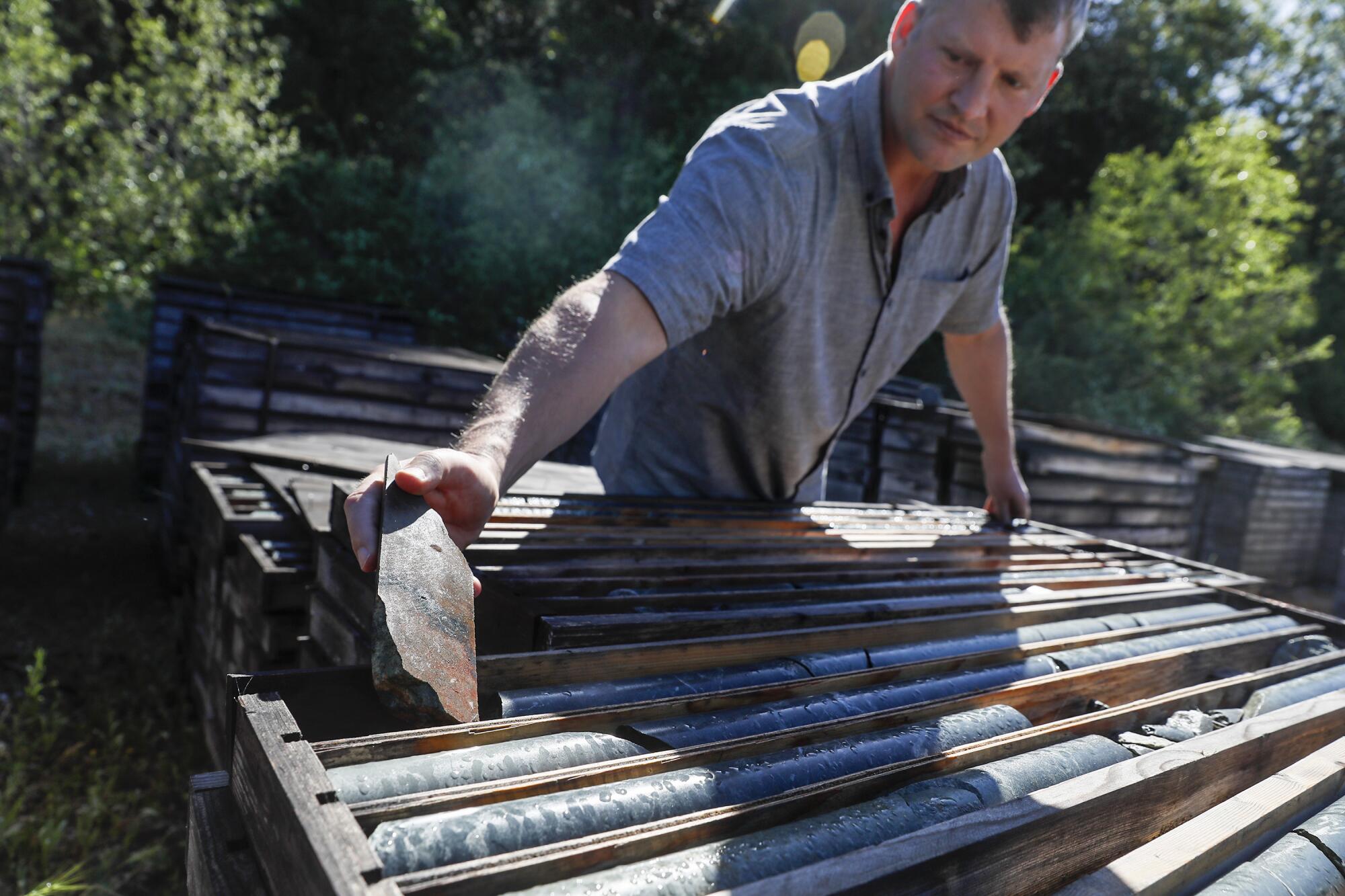
The mine’s tentacles sprawl beneath Grass Valley, a mountain town of about 13,700 people.
Rise Grass Valley — which is trying to get an 80-year use permit from the county — owns about 4 square miles of subsurface mineral rights that extend beneath homes, businesses and the Nevada County Airport.
Calling their campaign MineWatch, alarmed townspeople — who have successfully thwarted previous attempts to reopen the mine — have packed into public meetings and waved signs outside the locked gates of the Idaho-Maryland.
One resident wrote a rock song called “Wells Run Dry,” complete with a music video featuring dancing, sun-dappled anti-mine protesters.
Won’t you please do us the decency of pretending like you care? the singer pleads. While you fill our space with toxic waste and contaminate our air.
Like many of California’s estimated 47,000 abandoned mines, the Idaho-Maryland has a toxic legacy.
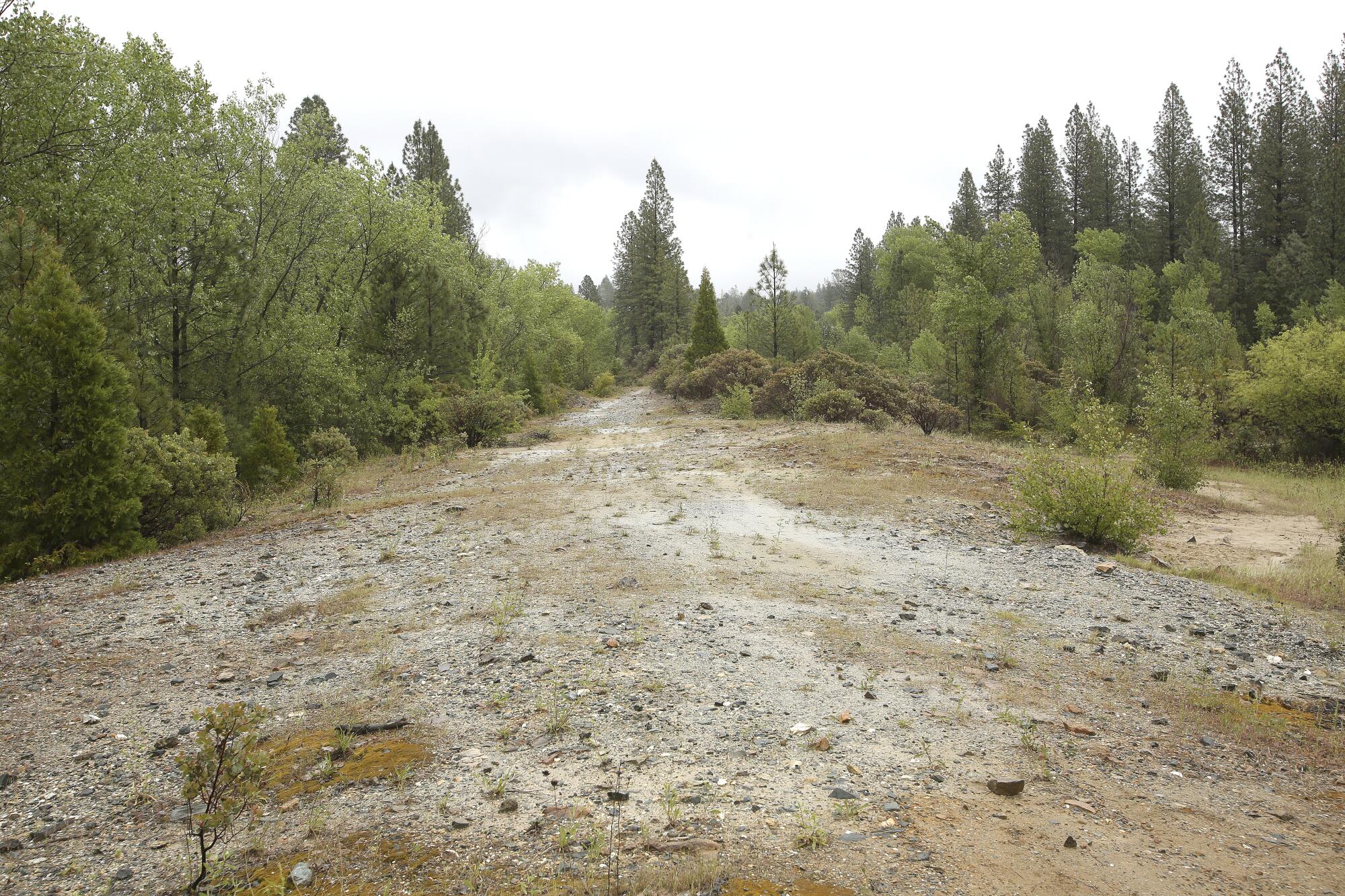
An aboveground portion of the mining grounds, called the Centennial Site, was historically used for dumping mine waste and is so contaminated with arsenic, lead and mercury that it warranted consideration as a federal Superfund site.
To avoid that designation, Mossman and his company agreed to clean it up — but said they might use the site for mine waste disposal in the future.
To get the mine running again, Rise Grass Valley would have to drain its flooded tunnels and continuously pump groundwater from it. The water would be sent to a clay-lined pond where heavy metals, such as iron and manganese, would settle out of it, then be filtered at a newly built water treatment facility.
It would then be discharged into South Fork Wolf Creek, a small brook that flows through the property that critics contend could flood as mine water is dumped into it.
Mossman says the treated water will be “better than drinking water” and that the mine will actually create a surplus of much-needed water that could be used for agriculture and other needs.
But detractors are leery of a project that requires pumping groundwater as California is in the midst of climate change and an extreme drought that is adding to strains on underwater aquifers. Elsewhere in the state — most famously the Central Valley — overpumping has caused land to sink.
::
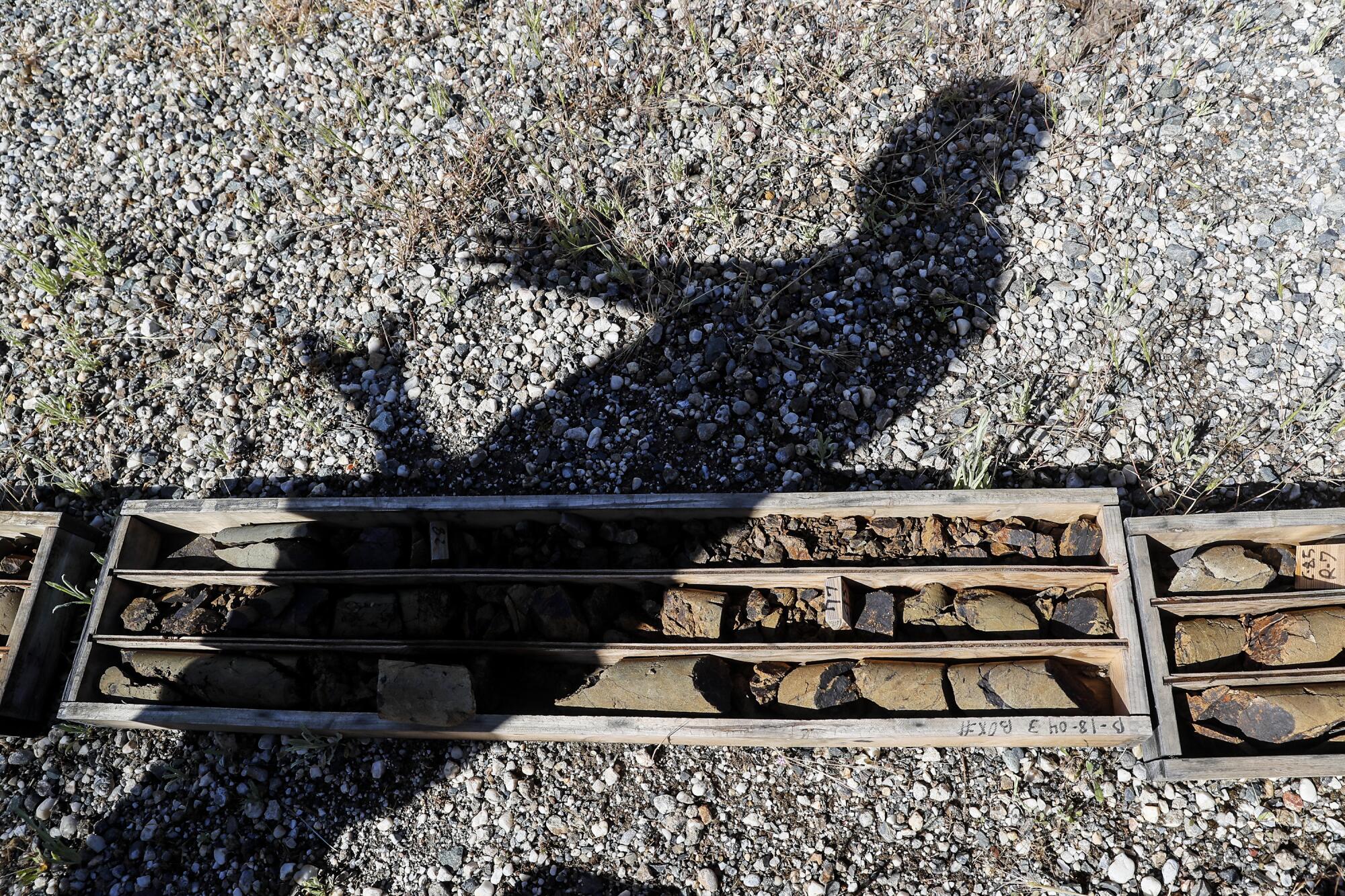
Before coming to Grass Valley, Mossman was the president and chief executive of a company called Banks Island Gold.
It ran the Yellow Giant gold mine on remote Banks Island off the coast of British Columbia, on the traditional land of the Indigenous Gitxaala Nation — which long opposed the mine because of potential pollution.
Mossman started mining there in 2014. But after he received complaints, provincial inspectors showed up the next year and found that his company was releasing mine waste and contaminated water into creeks, ponds and wetlands.
In July 2015, the British Columbia government shut down the mine. Mossman’s company declared bankruptcy a few months later.
The government confiscated the company’s $420,000 reclamation security — essentially a security deposit — and has spent about $250,000 to remove explosives and hazardous materials, develop a final cleanup plan, and monitor water quality, the British Columbia Ministry of Energy, Mines and Low Carbon Innovation told The Times.
Mossman and his chief geologist are currently on trial in British Columbia on nine federal and 20 provincial charges related to spills at the mine, a spokesman for the British Columbia Prosecution Service said.
The trial began this week, the spokesman said.
Mossman declined to comment on the case.
::
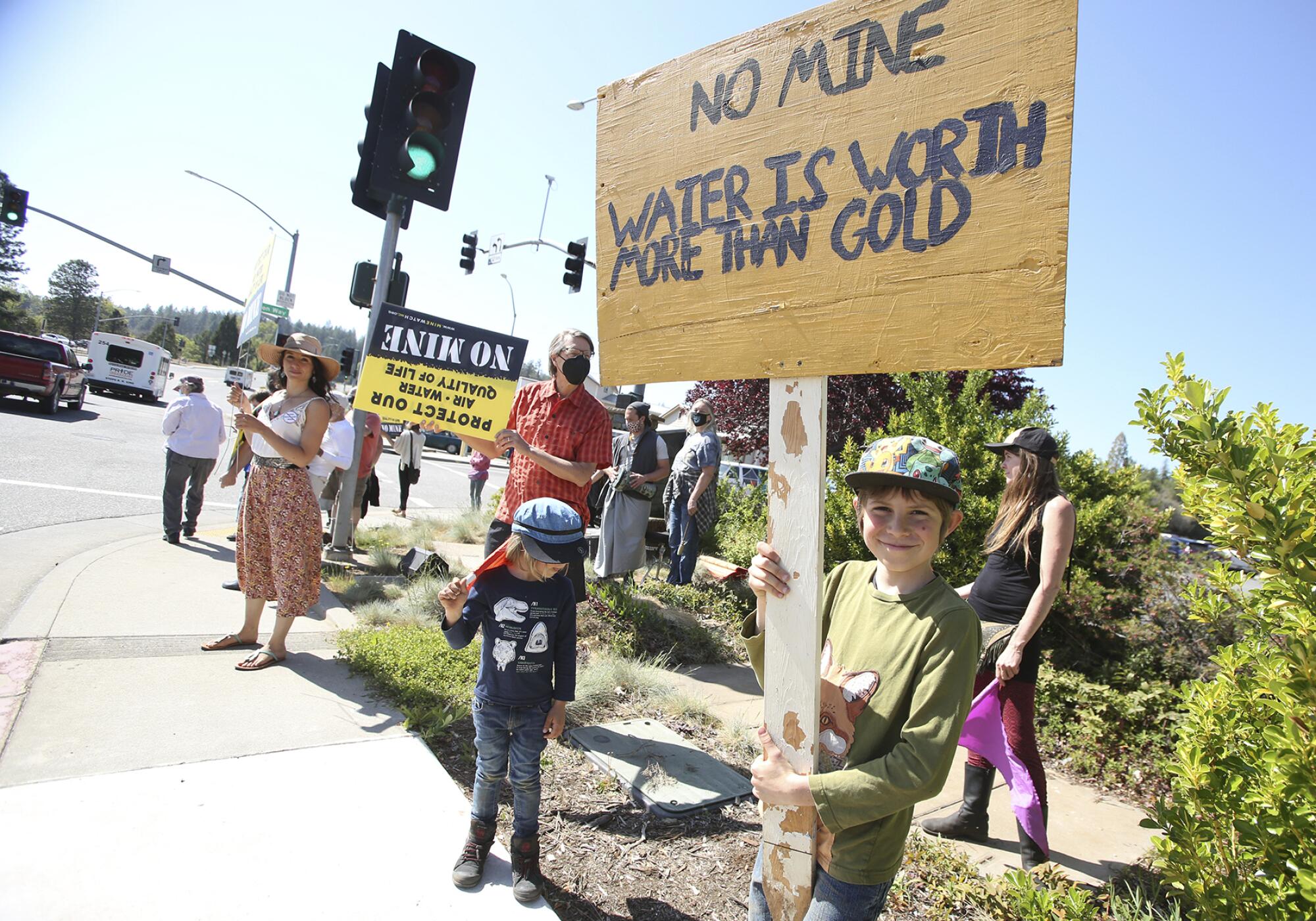
In Grass Valley, this is Christy Hubbard’s nightmare scenario: She walks into her kitchen. Turns on the faucet. No water comes out.
Hubbard, who lived out her dream by moving to the mountains after retiring from Adobe Systems in the Bay Area, lives on four forested acres that border the mine. She relies upon a well for her water.
Like many, she worries her well could be depleted or contaminated as Rise Grass Valley pumps groundwater from the fractured bedrock.
“Water is our gold,” she said. “We’re at the very center of the drought. We’re on the front lines of climate change here. We live in a forest, for heaven’s sake, that’s been really hit by drought.”
The draft environmental impact report says the mine could significantly affect wells on about 30 properties. Rise Grass Valley would pay to hook those properties up to the Nevada Irrigation District, which relies on the drought-shrunken Sierra snowpack.
But members of the Nevada Irrigation District’s board of directors have expressed “concern that the number of impacted wells could far exceed the 30 estimated” by the report, Susan Lauer, a spokeswoman for the district, said in an email.
They recommended Rise Grass Valley gather more data — including more extensive monitoring of wells and groundwater — before sucking water out of the mine, she said.
On a recent hot and mosquito-thick afternoon, as Mossman stood beside scores of boxes full of cylindrical rock core samples on the Idaho-Maryland site, he shrugged off concerns about water.
Mining, he said, would happen far below domestic wells — primarily at 1,600 feet and deeper — where the rock is more solid than it is closer to the surface.
“They’re like, ‘Well, what if I’m connected to the mine through some fractures?’” he said of his critics. “If they were connected, their wells would already be put in a drain.
“You have all these PhDs with hydrology studies, but it really isn’t that complicated. It’s solid rock. It’s just not permeable.”
::
The Nevada County Board of Supervisors will ultimately vote on whether to reopen the Idaho-Maryland mine, and the project would need a slew of other permits from federal and regional entities.
If it reopens, mining will commence on the ancestral homeland of the Nevada City Rancheria Nisenan Tribe, who were brutalized and forced off their land during the Gold Rush.
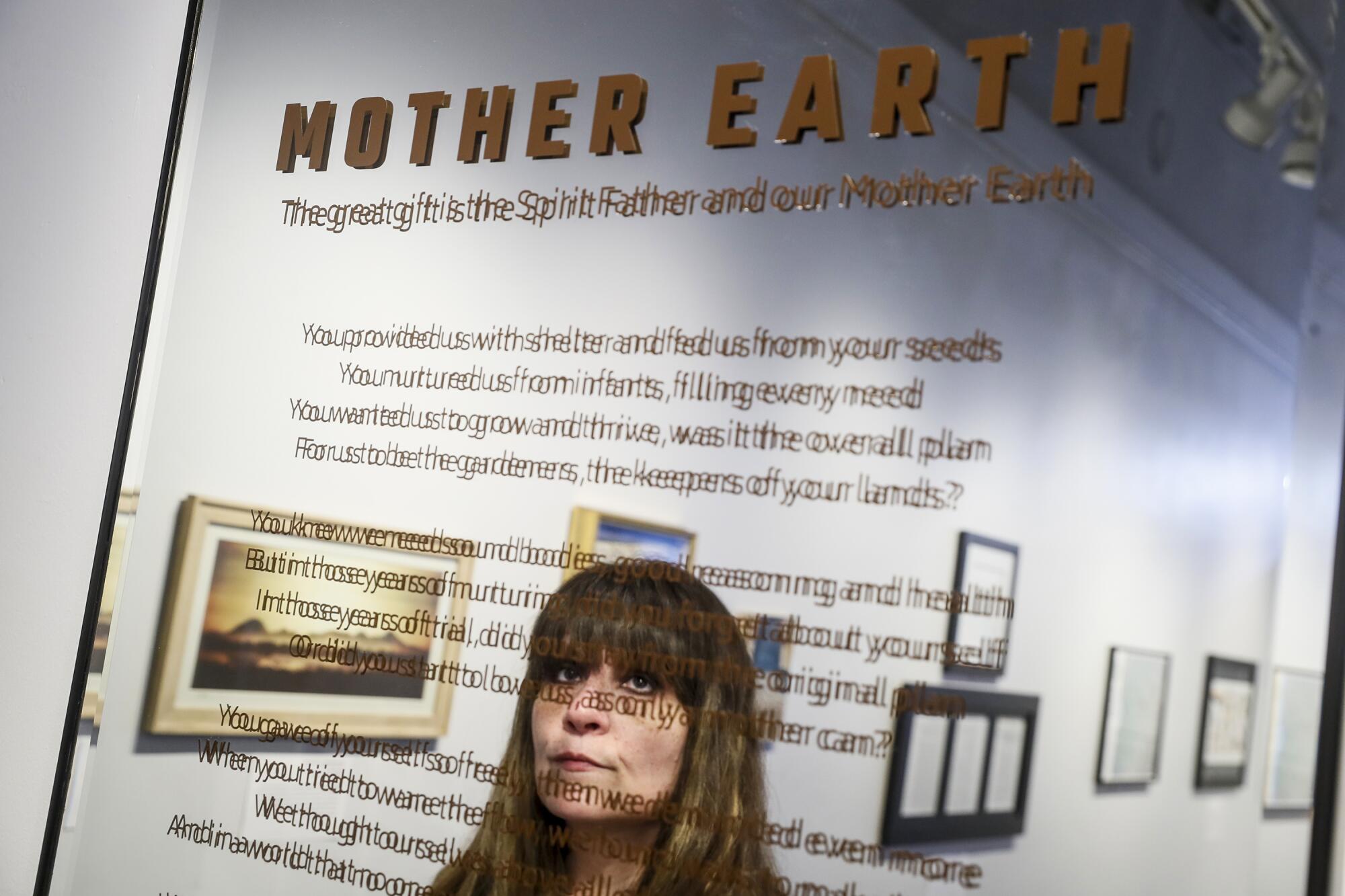
Shelly Covert, a spokeswoman for the tribe, said she was stunned to hear the mine could be reopened. Like the Gitxaala people in Canada, the Nisenan don’t want Mossman’s mine because of the harm it could do to the environment.
“This land is just starting to revive,” she said. “They’re saying, ‘The science is great now. We don’t have to worry about anything.’ I still almost get speechless because I think it’s just so irresponsible.”
The Nisenan, Covert said, feel as though their small tribe has “a small voice” when it comes to the mine because its federal recognition — which would give it more formal bargaining power — was terminated by Congress decades ago.
The county supervisors who will eventually vote on Mossman’s project have publicly supported helping the tribe regain its recognition.
In an April letter to the county planning department, Frank Lawrence, an attorney for the Nisenan Tribe, wrote that the project’s draft environmental report did not address the Idaho-Maryland’s role “in causing and perpetuating the genocide against the Tribe and its members.”
The letter was forwarded to Mossman in an email. He accidentally hit “reply all” and inadvertently responded to Lawrence.
“The county is so naive in trying to assist this group to gain status,” Mossman wrote.
Then he sarcastically alluded to the tribes of the Great White North, where the Gitxaala could not stop his last mine from opening.
“Welcome to Canada.”
Times researcher Jennifer Arcand contributed to this report.
- Share via
Watch L.A. Times Today at 7 p.m. on Spectrum News 1 on Channel 1 or live stream on the Spectrum News App. Palos Verdes Peninsula and Orange County viewers can watch on Cox Systems on channel 99.
More to Read
Sign up for Essential California
The most important California stories and recommendations in your inbox every morning.
You may occasionally receive promotional content from the Los Angeles Times.
